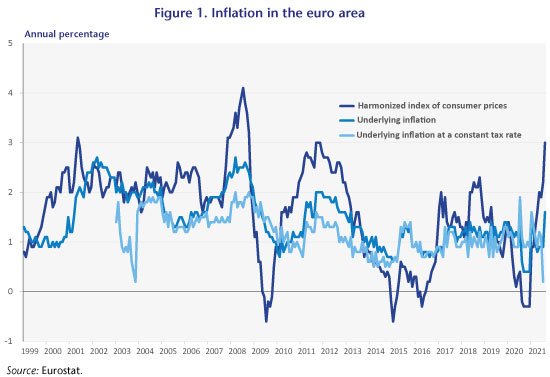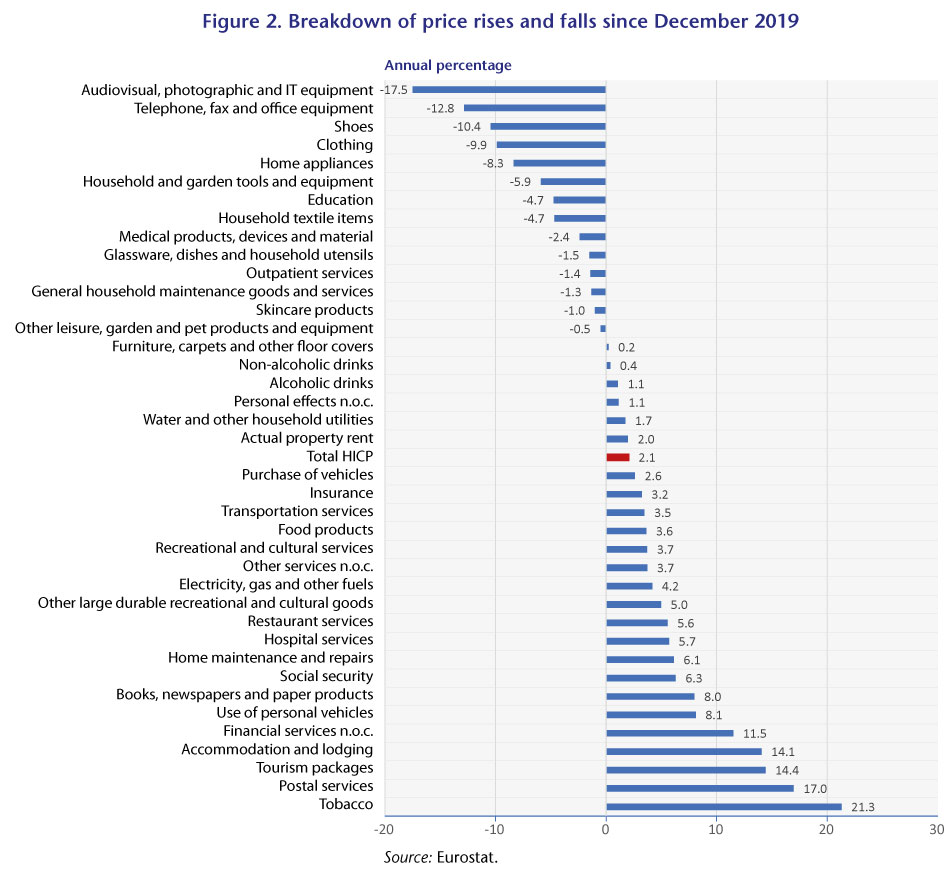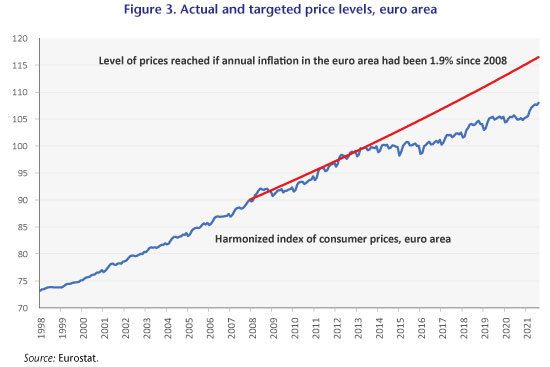Should the ECB be concerned about the recent rise in inflation?
by Christophe Blot, Caroline Bozou and Jérôme Creel
In August 2021, inflation in the euro area reached
3% year-on-year. This level, which has not been seen since November 2011, exceeds
the European Central Bank’s target of 2%. This recent momentum is being driven partly
by oil prices, but there has been a simultaneous rebound in underlying inflation,
which excludes the energy and food price indices from the calculation.
Inflation in the United States is also returning to levels not seen for several
years, fuelling the debate on a potential return of inflationary risks. Given
the central banks’ mandate to maintain price stability, it is legitimate for them
to examine the sources of renewed inflation. In a recent paper in preparation
for the Monetary Dialogue between the European Parliament
and the ECB,
we discuss the temporary rather than permanent nature of this episode of
inflation.
The recent development of inflation cannot be
dissociated from the overall economic situation, which today is still strongly affected
by the health crisis. After a sharp fall in activity – GDP contracted by 6.5%
in 2020 – the macroeconomic performance of the euro area remains erratic. The
crisis has been unprecedented both in terms of its scale and in terms of its
sectoral characteristics and the nature of the shocks that have hit the euro
area economies. The Covid-19 crisis has in reality been characterised by a simultaneous
negative shock to both supply and demand (see Dauvin and Sampognaro, 2021).
The factors driving current inflation appear to be
temporary in nature. Indeed, a review of recent data suggests that the rise in
inflation is mainly due to energy prices, to changes in Value-Added Tax rates
and to the recovery from the most dramatic one-year recession since World War
II (Figure 1). However, at a disaggregated level, it appears that for most
goods, prices are often below the December 2019 level, while prices for some
services are higher (Figure 2).
Nevertheless, there are many factors that could
influence inflation over the medium term, and they leave some uncertainty about
future pressure. The demand shock from the European fiscal stimulus and from labour
market pressures is likely to be small. The inflationary cost of a fall in euro
area unemployment is now very low – there is talk of a flattening of the
Phillips curve, see Bobeica, Hartwig, and Nickel, 2021) – and job
vacancies, though high, are below the levels of 2018 when there were no fears
of a return of inflation. However, agents’ dissaving behaviour is generating
inflationary pressures that could herald a more uncertain path. A surge in
demand could fuel future price increases, especially if the difficulties in supply
adjustment observed recently in certain sectors were to persist. As for supply
difficulties and the rising cost of maritime transport, the latter’s strong
correlation with oil prices suggests this will fall over the next two years
(see the US
Energy Information Administration bulletin).
However, if we take a longer view, we can see that the upturn in inflation in no way makes up for the many years during which inflation fell below the 2% target (Figure 3). Thus, as long as the surge observed in recent months remains contained, this return of inflation could be seen as good news for the ECB, enabling it to finally reach its target and even possibly make up for past under-adjustments.


